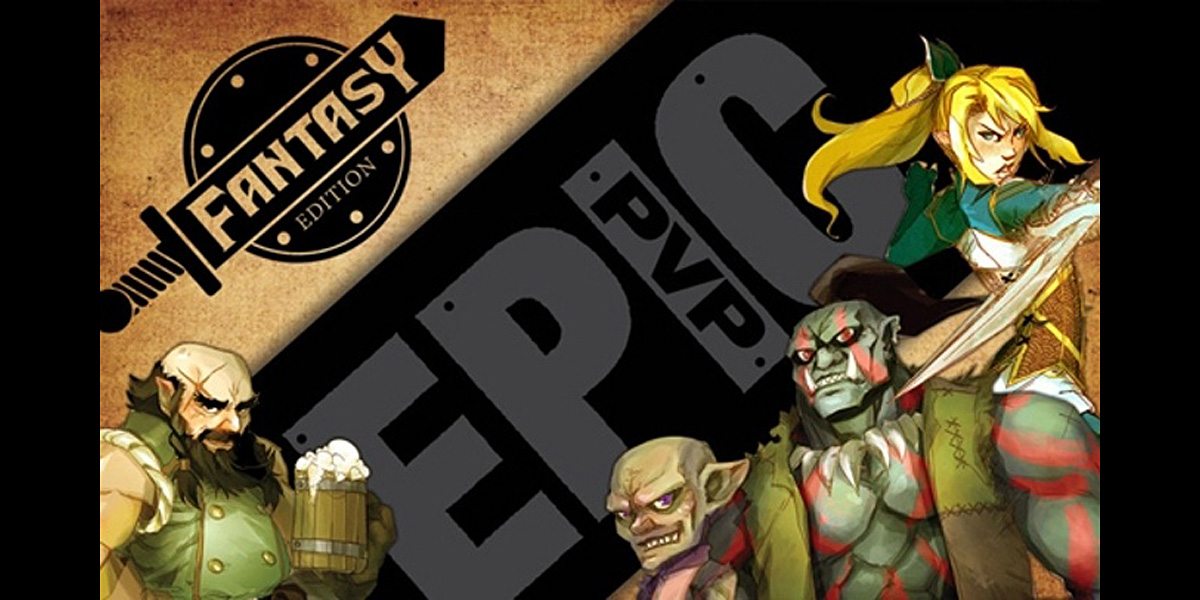Fill your hotel with ghosts and spiders and creepy dolls, and try to scare the most guests!
In Reaping the Rewards, I take a look at the finished product from a crowdfunding campaign. Dead & Breakfast was originally funded through Kickstarter in early 2018, and was delivered to backers at the end of 2018 and early 2019.
What Is Dead & Breakfast?
Dead & Breakfast is a tile-laying game for 2 to 4 players, ages 7 and up, and takes about 45 minutes to play. It retails for £19.99 and is available in stores and directly from the publisher. The rules aren’t too difficult to learn, and with younger kids you can omit the bonus scoring tiles.
Dead & Breakfast was designed by Rodrigo Rego and published by Brain Crack Games, with illustrations by Louis Durrant.
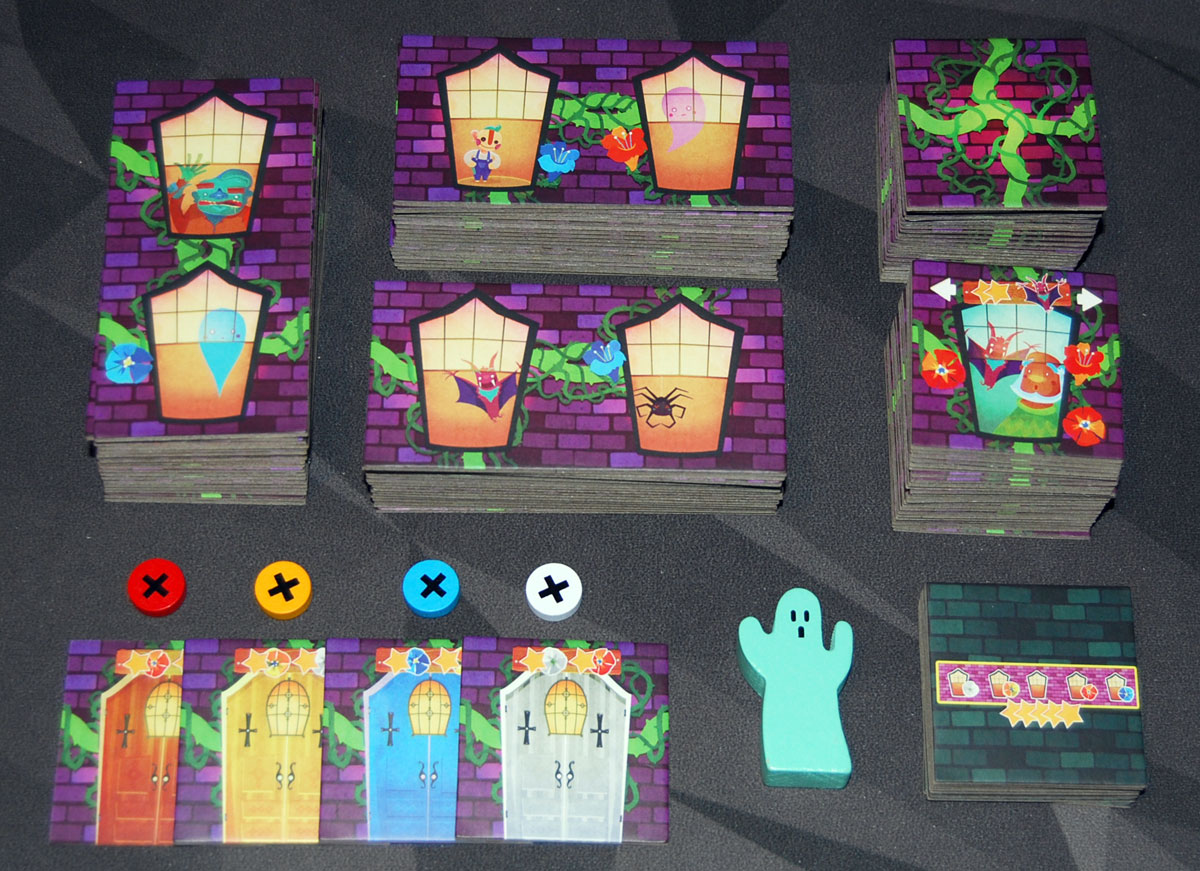
Dead & Breakfast Components
- 54 Window tiles
- 24 Guest tiles
- 24 Wall tiles
- 4 Door tiles
- 4 Score markers
- 8 Bonus tiles
- Ghost meeple

As you can see from the list, the bulk of the game is cardboard tiles, and the box itself is pretty much jam-packed with them, with a tiny bit of space leftover for the wooden components. The window tiles are rectangular, and all the rest are squares.
Each window tile has two windows on it; some are arranged horizontally side by side and some are vertical. Most of the windows have a creature of some sort in them, but there are a few that are empty as well. Along the wall outside the windows there are some vines and flowers.

There are four different flowers, and you need to be able to tell them apart because each player only scores for two types. According to the publisher, they were designed to be color blind friendly, using a pattern of light and dark petals. However, I found that with my non-color-blind group, many of us had trouble distinguishing between the red flowers and the orange flowers. It may have been nice to use different flower shapes rather than just colors, though I understand they’re all supposed to be poison ivy, so the flowers should match (not that they actually look like poison ivy flowers, either).
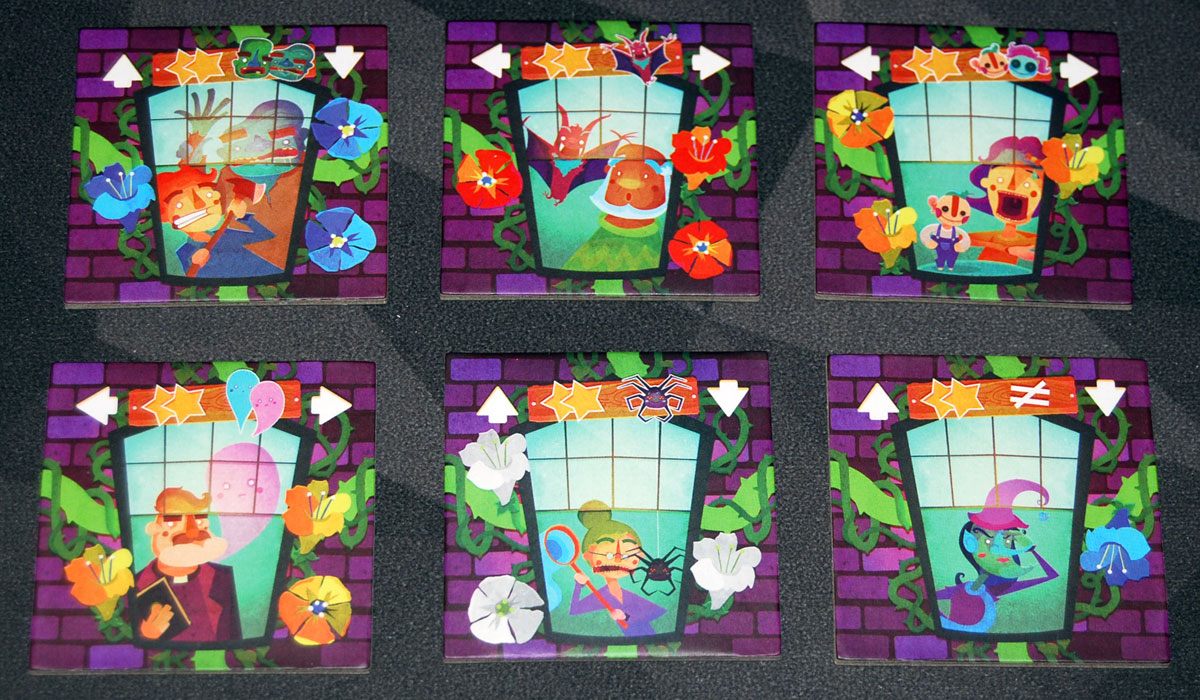
The guests have exaggerated expressions of fright, and the creatures are more amusing than actually scary. Although there is a variety of color in the guests and creatures, the purple brick walls, green vines, and yellow-orange windows make up the bulk of the hotel, and so the overall look is somewhat uniform. Everyone’s completed hotel looks very similar at a glance.

The ghost meeple is quite fun—pale green, and pretty big. The scoring markers are simple wooden discs with an X on one side for when you lap the scoring track, which is printed along the edge of the box insert. This was an interesting choice, because it means putting the tokens on a narrow ledge at the end of the game when you’re calculating the score. Also, the score track only goes up to 30, but in the games I’ve played (using the bonus scoring tiles) most of us have gotten over 60 points. It’s not clear if the publisher assumed that most people wouldn’t hit 60 points. It can get confusing who’s actually ahead as you flip the scoring markers back and forth.
How to Play Dead & Breakfast
You can download a copy of the rulebook here.
The Goal
The goal of the game is to score the most points by matching guests with their fears, connecting flowers with vines, and achieving the bonus conditions.

Setup
Shuffle each stack of tiles separately and set them face-down. Place 6 window tiles face-up in the center of the play area and place the ghost meeple on one of them. Place 4 guest tiles face-up. Draw one bonus tile and place it face-up, returning the rest of the bonus tiles to the box.
Give each player a door tile, which they place in front of them.
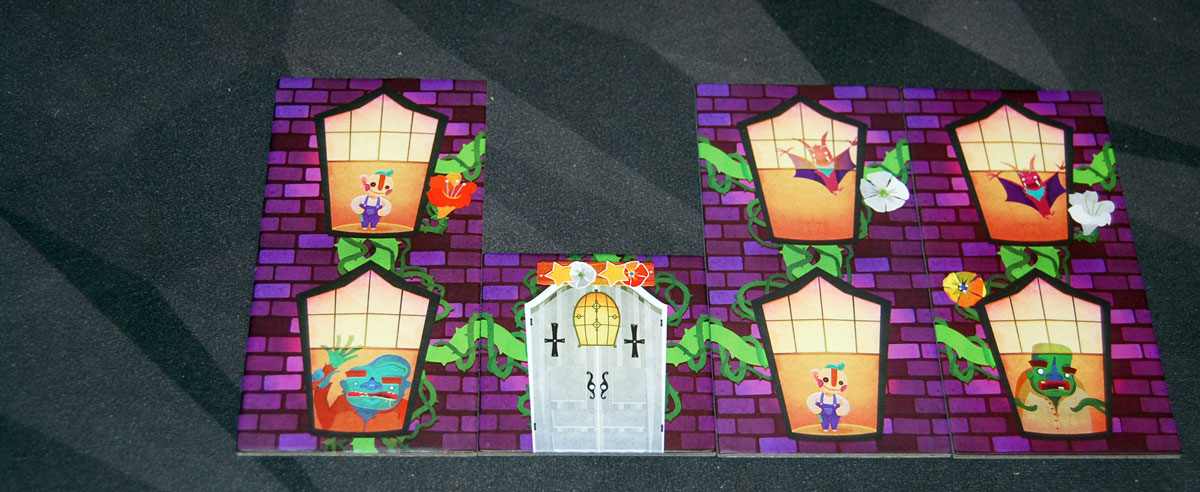
Gameplay
On your turn, you may move the ghost 1 to 3 spaces clockwise, and then take the window tile it lands on, replacing it from the supply. You must either place this window tile into your hotel, or else discard it and take 2 wall tiles to place in your hotel.
Tiles must be oriented correctly, and must be placed orthogonally adjacent to an existing tile in your hotel. Also, your hotel must fit in a 5×5 grid, with the door at the center of the ground floor.
For each floor of your hotel that you complete on your turn, you will take a guest from the row and place it over one of your window tiles (in any row), and then refill the market from the stack.

Game End
The game ends after everyone’s hotel is a complete 5×5 square. Then it’s time to score!
Each guest has a type of creature they’re scared of, as well as arrows indicating whether they score for a row or a column. For each matching creature in that guest’s corresponding row or column, you score 2 points. Note that the guest tile itself has one of the creatures, which also scores. There’s one exception: the witch scores 2 points for each different type of creature in the row or column, and has no creatures in her own window.
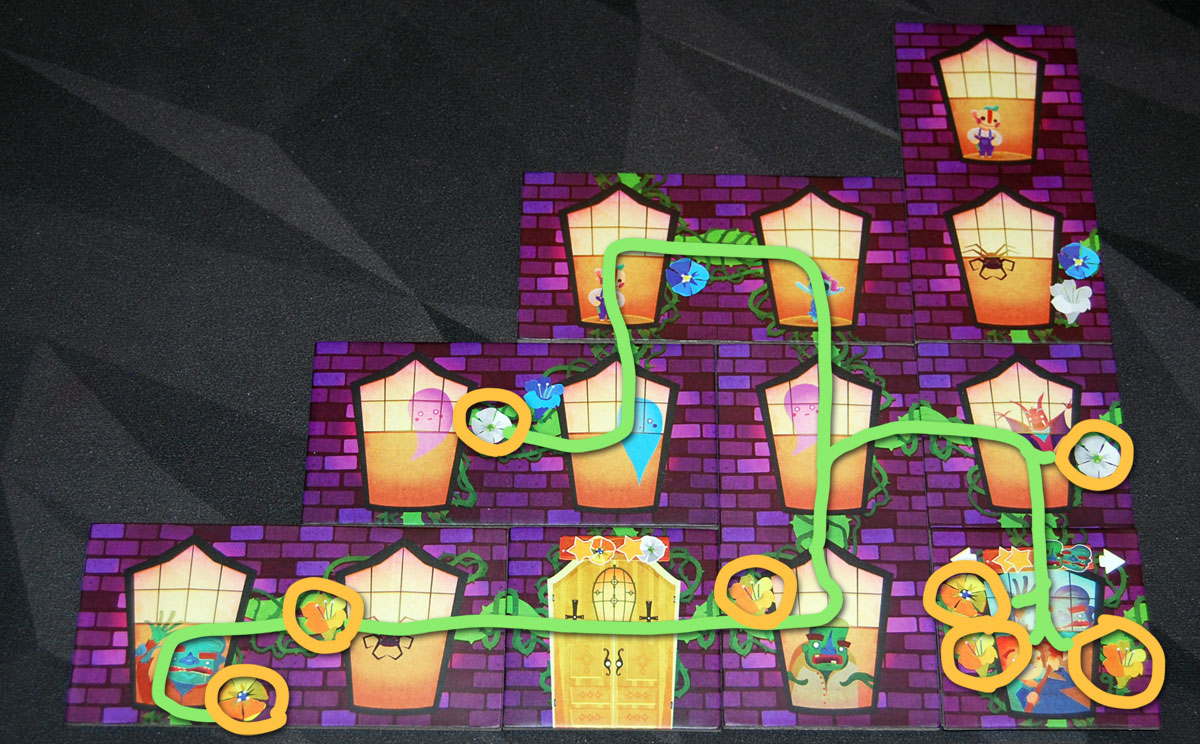
You also score points for flowers, but there are some restrictions. You only score points for the two colors of flowers shown above your door, and flowers are only worth points if they are connected to your front door via vines. Wall tiles and guest tiles connect vines in all four directions, but window tiles have limited connections. Each matching flower that is connected to your door is worth 1 point.
Each player checks whether they have fulfilled the conditions of the bonus tile, and scores points accordingly. (For instance, you might score 5 points for each floor with 4 different creatures, or 3 points for each column that has at least one guest.)
The highest score wins, with ties going to the player who has the single highest scoring guest. If that’s still a tie, go to the second-highest scoring guest, and so on.
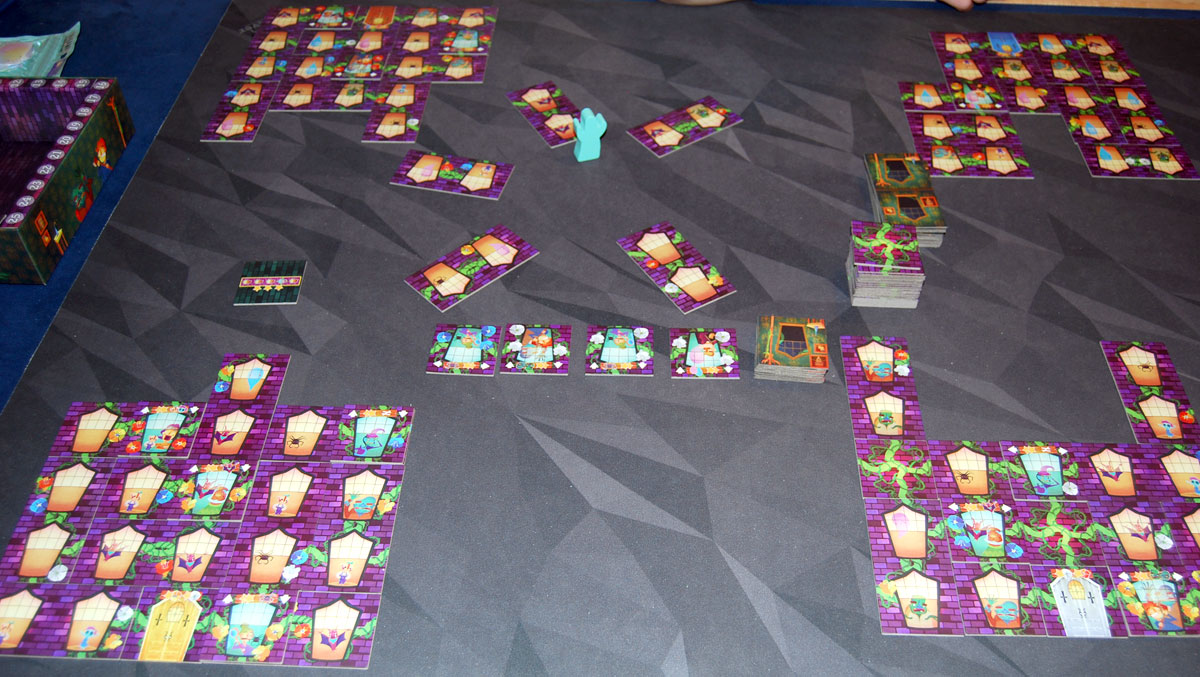
Why You Should Play Dead & Breakfast
I had missed Dead & Breakfast when it was on Kickstarter, but the publisher has an upcoming expansion planned so I got an opportunity to try it out. I like tile-laying games, particularly with a puzzly aspect to them, and Dead & Breakfast fit the bill. The story is simple but amusing: fill your hotel with creepy creatures, and then invite guests who will be the most terrified. The flowering poison ivy definitely adds to the puzzle but doesn’t quite fit the story, though.
There are a few things going on with the game that make for a fun puzzle. First is the fact that you need to end up with a 5×5 square, starting with the door tile in the center. If you’ve played Kingdomino, you know the challenge of building a 5×5 square using 1×2 tiles: it’s possible to box yourself in and leave small gaps that can’t be filled. But in Dead & Breakfast, there’s an additional wrinkle: Since the window tiles have a fixed orientation, you might have an opening that requires a vertical tile, and find that your choices are all horizontal instead. (And, of course, if other players see that you need a particular tile orientation, they can try to leave the ghost in an inconvenient position for you.)
To fill those gaps, you use the wall tiles, which are small squares. On the plus side, they have 4-way vines so they help connect the flowers, but they have no windows (whether for creatures or guests) and no flowers of their own. It kind of feels bad to take wall tiles instead of a window, but you do what you gotta do. Nobody wants to visit a hotel that has huge gaps in the structure.
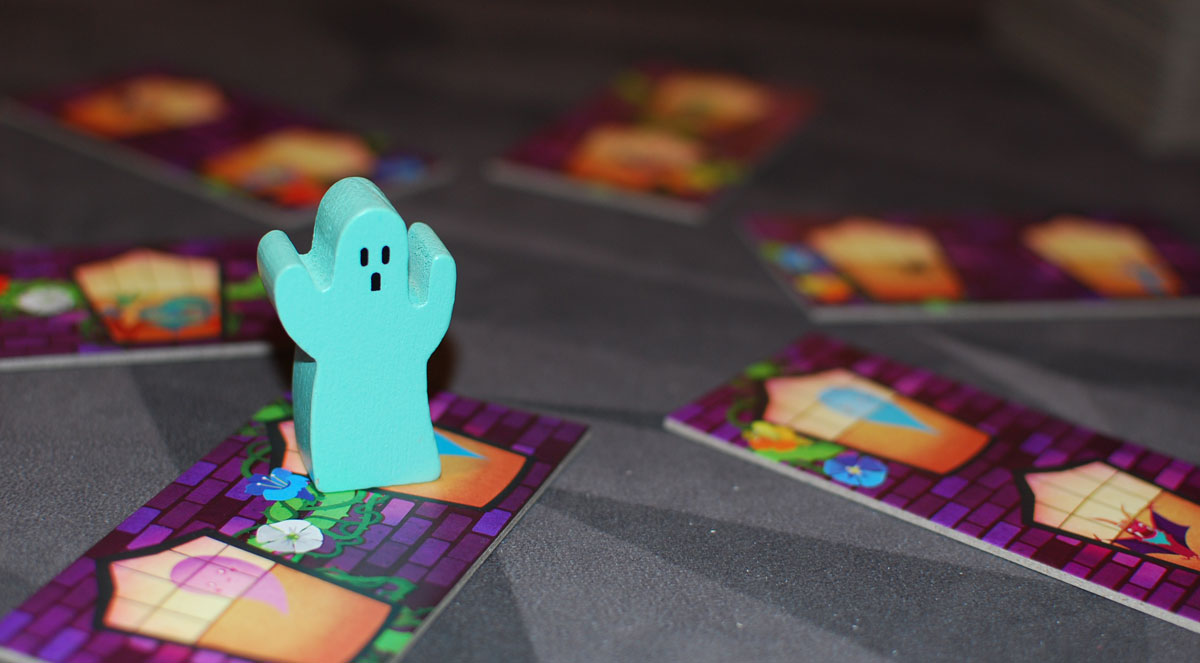
Deciding how to set up the windows (and the creatures within) is another challenge. In the stack of guests, there are several for each creature type, and they’re split between scoring for the guest’s column or row. Knowing that, you might just go ahead and start building out a column of bats or a row of zombies based on the tiles that are available to you, hoping to get the right guest when the time comes. Ah, the time when the guests arrive isn’t always convenient. You take guests when you complete a row of your hotel, so even if you’ve completed your vertical column of bats, it doesn’t mean you get to welcome that bat-fearing guest yet. It might mean you have to make a less-than-ideal row simply to grab the guest before somebody else does.
With only four guests in the line at a time, you have limited knowledge about who’s coming next. Sometimes you’ll finish the perfect row for somebody who’s scared of creepy dolls … but that guest isn’t around yet—so you just have to take somebody else. You might even delay completing your floor, hoping that somebody else takes a guest before then and reveals a new option. Other times, you might be racing another player for the same guest.
One thing that sets the guests apart is the flower colors. Each guest (except the witch) has three of the same color, plus vines that connect in all four directions, so the perfect guest tile can be worth a lot of points to you. Since each player has two colors that they’re interested in, it means that you may overlap in flower colors with up to two of the other players. Do you take a guest that has the wrong flower colors, or wait and hope that the right color shows up later?
My main complaint, which I mentioned before, is that I’m not as thrilled with the way it looks. Each individual illustration is fun, but at the end of the game everyone’s hotels look extremely similar. One of the things I like about most tile-laying games is seeing the “map” grow as the game progresses, and the way that things can either take different shapes or different appearances based on how people play. In this one, everyone ends up with a big purple square, and that can overwhelm the variety in the details.

The bonus tiles provide a single side goal for all of the players to pursue, and adds a little bit of variety from game to game. A few have to do with guests—whether they’re connected to each other, or in different rows or different columns. Some award points for the flowers or creatures that you have the least of, encouraging you to diversify. Still others have to do with the ivy growing on the walls. While you can leave these out to simplify the game, I think I’ll usually include them, particularly since you only use one at a time and so you can explain just the condition that is being used for that game.
The level of complexity of the puzzle is slightly higher than Kingdomino because of the way you have to consider tile orientation, vine connections, and the timing of completing a row, but it does have a similar vibe. The way you get tiles—from a rondel rather than a turn order based on the value of the tile—gives players a way to affect other players in a game that is primarily about building your own thing.
Overall, I think Dead & Breakfast will appeal to those who want a lightly spooky theme with their tile-laying games. The player interaction is light and mostly comes in the form of taking a tile that somebody else wants, or leaving the ghost in a place so they can’t reach the tile they need. I’m curious to see what the upcoming expansion will add to the experience as well—watch for a pre-order sometime soon!
For more information, visit the Brain Crack Games website.
Click here to see all our tabletop game reviews.
![]() To subscribe to GeekDad’s tabletop gaming coverage, please copy this link and add it to your RSS reader.
To subscribe to GeekDad’s tabletop gaming coverage, please copy this link and add it to your RSS reader.
Disclosure: GeekDad received a copy of this game for review purposes.




